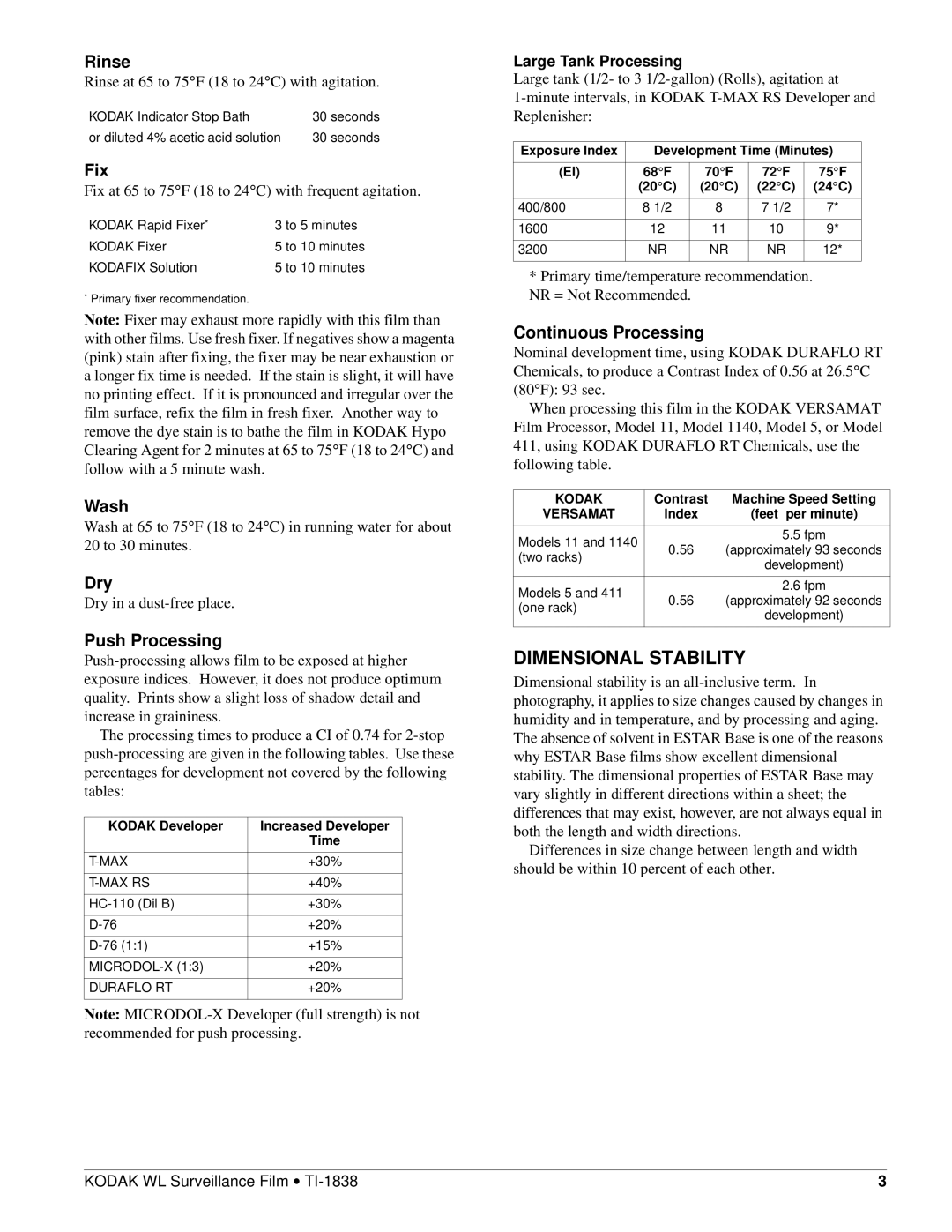2210 specifications
The Kodak 2210 is a robust digital printer specifically designed to cater to the needs of high-volume photo printing. Boasting outstanding print quality and an efficient workflow, this printer stands out in the competitive marketplace of professional imaging solutions.One of the key features of the Kodak 2210 is its ability to produce stunning output with a print resolution that can reach up to 4800 dpi. This high resolution ensures that images are rendered with exceptional clarity and detail, making it an ideal option for photographers and graphic designers who demand perfection in their prints. The printer employs advanced dye-sublimation technology, which allows for vibrant colors and smooth gradation in images, significantly enhancing the visual appeal of the final product.
In terms of efficiency, the Kodak 2210 is designed for high-speed printing, capable of producing up to 200 prints per hour. This rapid performance makes it especially suitable for events such as weddings, parties, and other gatherings where quick turnaround times are crucial. The printer supports a variety of print sizes, allowing users to customize their images and cater to different client needs.
Another significant characteristic is the Kodak 2210’s user-friendly interface. With an intuitive touchscreen display, operators can easily navigate through printing options and settings, simplifying the overall user experience. The printer also includes network connectivity options, allowing multiple users to access and print from different devices with ease.
Moreover, the Kodak 2210 is built with reliability in mind. Constructed from high-quality materials, this printer is designed to withstand the rigors of continuous use, ensuring long-term performance. Along with its ability to print in various formats, including glossy and matte finishes, it provides a versatile solution for businesses and professionals alike.
Ultimately, the Kodak 2210 represents a perfect balance of quality, speed, and user convenience, making it an excellent choice for anyone looking to elevate their printing capabilities. With its commitment to delivering exceptional photo prints, it remains an essential tool for those in the photography and imaging industry.
